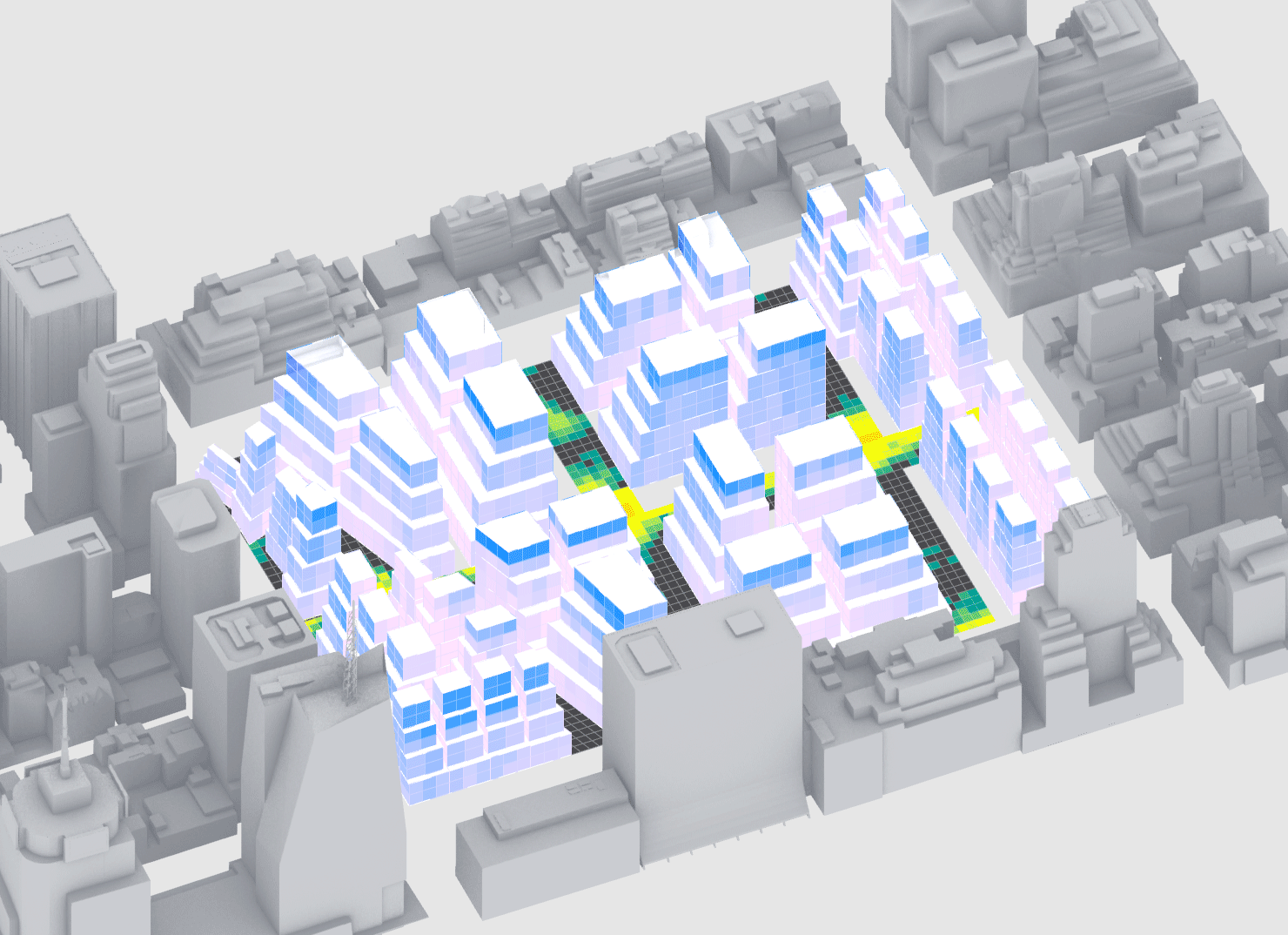
Sequence Summary:
This sequence of modules introduces computational design modeling in Grasshopper through first exploring the concept of computational design modeling and positioning it relative to other related methods, such as parametric modeling and generative modeling, and then developing a simple computational urban design model.
You get to generate hundreds of urban design schemes + performance metrics. Who wouldn't want to do that??
This sequence assumes that you have done the Intro to Grasshopper sequence.
Why?
The previous Intro to Grasshopper sequence touched on the power of computational design modeling to facilitate informed, data driven decision making through the generation and evaluation of hundreds or thousands of design options through the development of a parametric tower. However, that computational design model didn't have the complexity of inputs, procedural relationships, or metric outputs to really understand the value of computational design modelling. Through the development of an urban scale computational design model in this sequence you will introduce exactly that level complexity into your models, creating robust spatial data sets.
But wait, this section is title "Why?" and all you did was give me more of the sequence summary. If you can't explain why this is important, is it really?
Yes! The "Why" is such a big topic that the entire first module will be devoted to it.
CDP Requirements:
- If your are new to grasshopper do borth Intro to Grasshopper and Computational Design Modeling in Grasshopper.
- If you already know some Grasshopper review 7 Grasshopper Documentation Best Practices, create the view analysis tool in 8 Deriving Spatial Data, and review 10 Generating and Exploring Spatial Data of the Intro to Grasshopper sequence. Also complete all of the Computational Design Modeling sequence.

